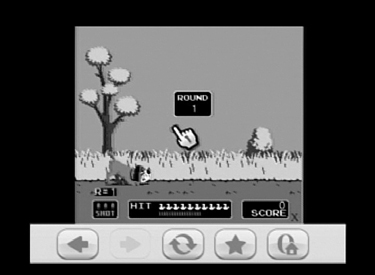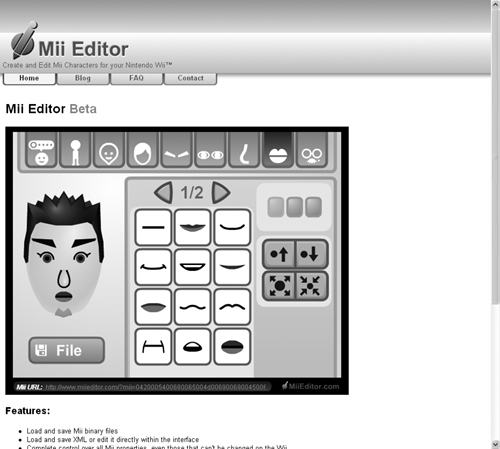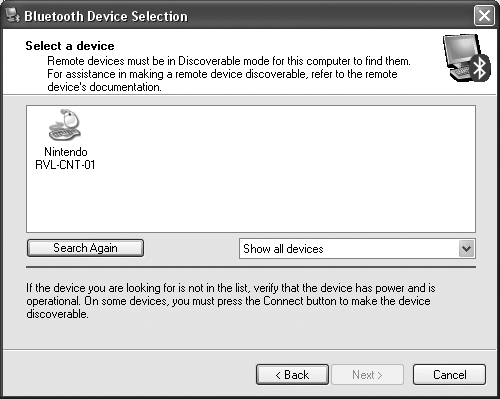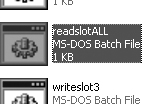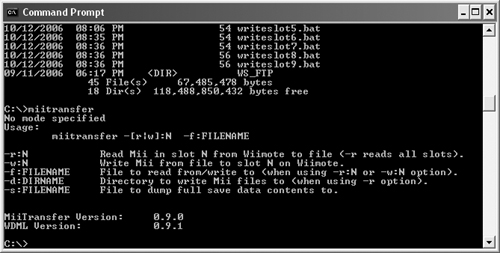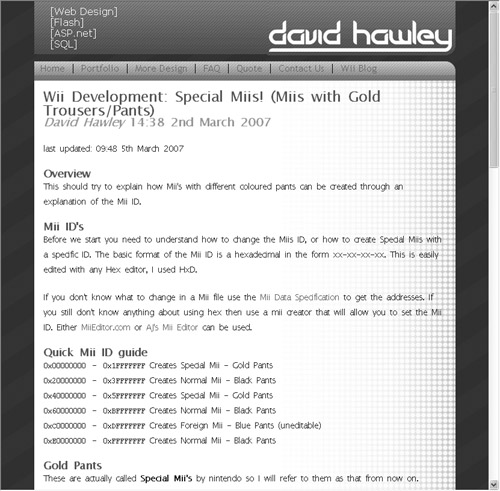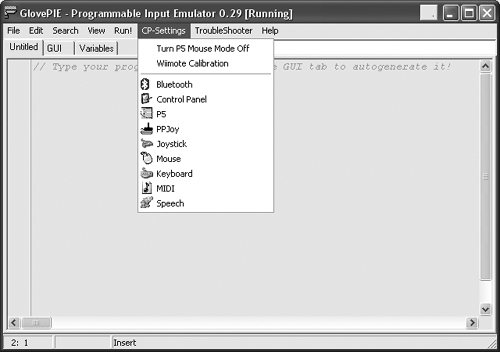When a new gaming console arrives on the market, it usually doesn’t take long for various mods and hacks to hit the streets. Mods is short for modifications, and hacks are modifications that aren’t sanctioned by the console’s manufacturer. Manufacturers rarely appreciate or sanction mods and hacks. Still, some companies show a tacit acceptance of some mods and hacks because they often help make a console more popular and give it more functionality.
Because the Wii hasn’t been on the market long, limited modifications and few true hacks are currently available, but that doesn’t mean you can’t find some cool ones.
In this chapter, I look at the most popular Wii mods and hacks.
Note
This chapter doesn’t hold your hand and take you step by step through every modification. Many of these mods are highly technical, requiring much more than a passing knowledge of electronics. You may have to understand Linux, soldering, electrical circuits, and basic programming to take on some of them.
Tip
Even if you’re a beginner, you can perform lots of fairly simple tips and tricks without worrying about toasting your Wii. But if you don’t have the expertise (or the nerve), you can have an expert do the work for you. Almost any electronic repair shop can pop a mod chip in for you.
You can do all kinds of things to alter the Wii, but many hacks and modifications will void your warranty. Therefore, people who are willing to dive into these procedures are not your average gamers. Still, you can find plenty of interesting ways to make the Wii (arguably) better.
Note
Tinkering with your Wii hardware or software may damage your Wii and will probably void your warranty. So hack and mod your Wii at your own risk.
Copy-related modifications allow the Wii to play archival copies of games. In other words, if you copy a Wii disc and then try to play the copy in your Wii, it won’t work. But several mods allow you to alter your Wii so that it can play copied versions of your games. Most of these mods require opening the Wii and getting out the soldering iron, so if that makes you squeamish, read on but don’t roll up your sleeves yet.
Note
If you assume that the only reason to mod a Wii is to copy games illegally, your assumption is wrong. Youngsters may take poor care of game discs, for example, so having backup copies to play if the originals got scratched or lost would be a huge bonus.
The CycloWiz (Figure 10.1) is one of the first workable mod chips for the Wii. Although it requires you to use a soldering iron and do some surgery on the Wii motherboard, it’s not nearly as technical as many other mod chips.
The CycloWiz chip offers these features:
Fully upgradeable via DVD (meaning that the chipset firmware can be upgraded)
Direct boot of Wii backup discs
Direct boot to GameCube backup discs
Direct boot of homebrew (homemade software) in GameCube mode
Capable of running imported GameCube games from other regions
Compatible with multidisc games
Compatible with DVD-R and DVD+R media
Easy installation (a relative claim, but true in this case)
You can get more information about the chip at the TeamCyclops Web site (www.teamcyclops.com), including highly detailed installation instructions in PDF form (Figure 10.2).
Like the CycloWiz, the Xeno WiiKey (Figure 10.3) is easy to install; you simply place it on a certain part of the Wii motherboard and solder several points. The chip has no wires or other cumbersome items to divert your attention. Just solder it onto the few key points, and you’re done.
The Xeno’s feature set includes:
Direct boot of Wii backup discs
Direct boot to GameCube backup discs
Direct boot of homebrew in GameCube mode
Capable of running imported GameCube games
Support for all current Wii chipset versions
Compatible with multidisc games
Compatible with DVD-R and DVD+R media
Easy installation
Direct boot of Wii games from different NTSC regions
Support for full-size (4 GB) discs for GameCube homebrew
Recovery mode for recovery from a bad flash (meaning that if you’re “flashing” the chip’s memory to modify the mod chip, and the process fails, you can recover from it without losing the chip)
One key feature of the Xeno that makes it superior to the CycloWiz (at least in theory) is that it supports all current Wii motherboard chipsets. But because the Xeno isn’t on the market yet, I can’t test that support.
Software modifications involve some aspect of the Wii console and its operating system or some part of the Wii’s software. Like the hard-wired mods, most software alterations simply aren’t recommended for most people—with the exception of the Duck Hunt game mod (covered in this section), which is safe and a lot of fun.
Several Web sites contain images that can cause the Wii’s Opera Web browser to restart. This little trick can be fun to pull, but if you do this, someone could cause the browser to restart and (during the restart) load in some malicious code that could destroy your Wii. For this reason, if you come across this sort of hack, don’t bother with it unless you know exactly what you’re doing.
Because this type of hack is so dangerous, I’m not supplying any links here, but if you really want the links, you can find them on the hacking sites listed at the end of this chapter.
Remember the old Duck Hunt game, released in 1984? In this game, ducks fly up out of a grassy meadow, and you must use a light gun (a gun attached to the gaming system that can sense what’s onscreen) to shoot them down.
Originally, the game was available for the Nintendo Entertainment System (NES) and in arcades. It was incredibly popular and surprisingly fun, considering its limitations.
Many people have been clamoring for Duck Hunt to be released on the Virtual Console for the Wii, because the Wii Remote can act like an old-fashioned light gun—only better. Sadly, this hasn’t happened yet, but some enterprising folks have come up with a way to get the game on the Wii anyway, and I have to salute their efforts. You can play a completely authentic, enjoyable version of Duck Hunt on your Wii simply by using the Internet Channel and the Opera browser to go to a particular Web page (Figure 10.4).
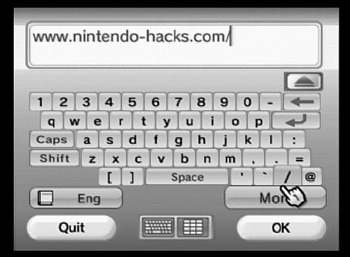
Figure 10.4. Enter www.nintendo-hacks.com/duck_hunt.swf. You have to enter this Web address only once if you make the site a favorite.
When you pull up this Web page and get Duck Hunt running on it (Figure 10.5), your Wii Remote becomes your gun, and you can play the game right off the bat. This hack is an amazing implementation of the Web and the Wii together. I don’t know how happy Nintendo is about it, but it works like a charm and is a ton of fun.
Way back in Chapter 4, I discuss the fact that you can use both Web-based (Figure 10.6) and PC-based Mii editors to alter Miis in ways that you can’t on the Wii itself. These programs also let you modify and store tons of Miis on your home computer, and modify and trade other people’s Miis as well.
In this section, I show you the basics of transferring Miis. (I cover this process in Chapter 4 as well.) I also mention a few hacks that require altering Mii data specifications to achieve the desired results (such as getting gold pants). These techniques are not for the average user, but if you like to tinker, read on.
Miis are stored in little files with the .mii extension (Figure 10.7). You need to get these files out of your Wii Remote’s storage area and download them to your computer for editing. Currently, the only way to do this is via a piece of software called MiiTransfer.
You can download MiiTransfer from various Web sites; go to http://wiihacks.blogspot.com, and search for Miitransfer. The software itself is tiny, taking up only 17.1 KB.
To get your Miis off your Wii Remote, you must have a Bluetooth connection on your Windows PC. (As of this writing, no Mii-transfer tools are available for the Mac.) My PC didn’t have a Bluetooth system in place, so I purchased a Kensington Bluetooth USB Adapter for $59 (Figure 10.8); this little USB fob plugs into the USB port on the PC.
I can’t take you through a step-by-step setup process, because you could have any of about a hundred Bluetooth adapters and any version of Windows, but if you follow the simple instructions that come with your adapter, setup should go swimmingly.
In my case, I put the Wii Remote next to my PC, plugged in the Bluetooth adapter, and installed the software. After that, I did a device search in the adapter software, and the Wii Remote showed up in the results list (Figure 10.9).
When the connection between your computer’s Bluetooth adapter and the Wii Remote is established, open the Mii Transfer software folder, and double-click the MS-DOS batch file readslotALL (Figure 10.10). Running this little program brings up a DOS window (Figure 10.11) and transfers all the Miis on your remote to your PC.
Again, this process is not cut and dried; the actual method you use depends on the versions of Windows and MiiTransfer you’re using, as well as the type of Bluetooth adapter and driver. For detailed (and constantly updated) directions, go to LiquidIce’s Nintendo Wii Hacks page at http://wiihacks.blogspot.com.
If you’re serious about fooling with the real innards of Miis, check out the WiiBrew Wiki (http://wiibrew.org/index.php). This wiki provides highly detailed information about Miis in programming language (Figure 10.12) for those who really want to tinker.
The amount of detailed information available on the Internet is truly amazing. David Hawley’s blog (www.davidhawley.co.uk/blog.aspx), for example, includes a Quick Mii ID Guide for various Mii pant colors (Figure 10.13).
Note
Although it may seem pointless to include this sort of information in a Pocket Guide, I’m showing it to make you aware that plenty of information on the Web can help you hack and modify your Miis to your heart’s content. Editing in hex (as it’s called) isn’t within the scope of this book, but you can learn the basics online. It’s not for everyone, but this, my friends, is the world of hacks and modifications.
Although hackers and modifiers usually gravitate toward the Wii console and software, the Wii Remote has inspired a ton of interesting avant-garde uses. The versatility of the Wii Remote has inspired engineers and nonengineers alike to find special uses for them.
This section looks at a few great hacks for the remote, from controlling a PC to controlling a robot.
Carl Kenner appears to be the leader in creating software that allows the Wii Remote to communicate with Windows PCs. Kenner’s GlovePIE software (Figure 10.15) is the backbone of making the Wii Remote work in various Windows environments. GlovePIE stands for Glove Programmable Input Emulator and was designed for use with virtual-reality gloves, but Kenner has found a way to get it to work well for the Wii Remote.
To learn more about GlovePIE and the host of possibilities for those who love programming, check out http://carl.kenner.googlepages.com/glovepie.
Note
Kenner found a way to hack the Wii Remote’s speaker so that sounds can be streamed directly to the speaker from a PC. I’m not sure what the purpose is, because the sounds coming out of the speaker are 4-bit sounds, but the accomplishment is interesting. Perhaps someone out there wants “In-A-Gadda-Da-Vida” to sound like it’s coming out of a telephone underwater.
People have found so many new ways to use the Wii Remote that making a complete list is impossible. So I decided to list a few new uses from just the past 6 months:
As a control for a sword-wielding robot (Figure 10.16)
As a control for a “smart home” (controlling heat, lights, television, security camera, and so on)
As a laser-tag game device
As air-drumming input devices (two remotes)

Figure 10.16. You can find some great videos on YouTube.com about the creators of this Wii Remote-controlled robot.




